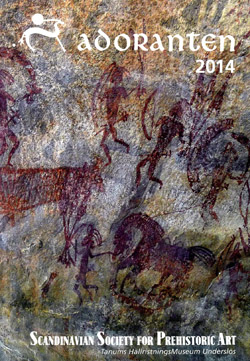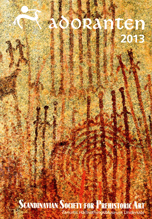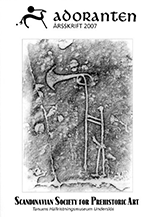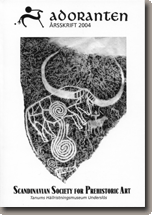Add 5422
|
Appian of Alexandria, Historia Romana, 16th century
|
Arundel 211
|
Greek-Latin dictionary, 17th century
|
Arundel 518
|
Georgios Boustronios, Chronicle of Cyprus, 16th century
|
Arundel 522
|
Works of Hesiod and Euripides, 1489
|
Arundel 523
|
Constantine Manasses, Chronicle, 1312–1313
|
Arundel 524
|
Four Gospels, 11th century
|
Arundel 525
|
Letters of Phalaris, 1470
|
Arundel 526
|
Manuel Chrysoloras, Erotemata, 15th century
|
Arundel 528
|
Compilation for Makarios, Bishop of Helicz, 15th century
|
Arundel 530
|
Aristophanes, Plutus and Nubes, 15th century
|
Arundel 532
|
Basil of Caesarea, In Hexaemeron, 9th century
|
Arundel 533
|
Works of Theodoros Balsamon, 14th century
|
Arundel 534
|
Theophylact of Bulgaria, Commentary on the Letters of Paul, 14th century
|
Arundel 535
|
Ascetic works of Isaac the Syrian, 14th century
|
Arundel 537
|
Medical tracts, 15th century
|
Arundel 538
|
Hippocratic works, 15th/16th century
|
Arundel 540
|
Euripides, Hecuba, Orestes and Phoenissae, 15th century
|
Arundel 541
|
Grammatical works of Hermogenes, 15th century
|
Arundel 544
|
St John Chrysostom, In Ioannem, 14th century
|
Arundel 545
|
Thucydides, Peloponnesian War, 15th century
|
Arundel 546
|
Works of Theodoret of Cyrrhus and Palladius of Helenopolis, 16th century
|
Arundel 548
|
Elements of Euclid, 16th century
|
Arundel 549
|
Sermons of St Gregory of Nazianzus, 11th century
|
Harley 825
|
Letters of Ephraim Pagitt, 1635
|
Harley 931
|
Extracts from the Psalms and St Paul, 1623
|
Harley 1686
|
Cassianus Bassus, Geoponica, 16th century
|
Harley 1752
|
Collection of Hymns and Epigrams, 15th century
|
Harley 1837
|
Collations of the Greek Bible, c. 1640–1659
|
Harley 2427
|
Psalms and Proverbs in English, Latin, Hebrew and Greek, 16th century
|
Harley 3318
|
Works of Philipp Melanchthon and others, 17th century
|
Harley 5051
|
Extracts from Greek and Latin authors, 17th century
|
Harley 5232
|
Anonymous commentary on the Apophthegmata, 16th century
|
Harley 5533
|
Psalter, 12th century
|
Harley 5542
|
Tetrastichs on the New and Old Testaments, 16th century
|
Harley 5544
|
Kekragaria, with late Byzantine notation, 17th century
|
Harley 5547
|
Plato and Aristides, 15th century
|
Harley 5565
|
Extracts from Plato, 16th century
|
Harley 5568
|
Polybius, 'Excerpta Antiqua', 16th century
|
Harley 5571
|
Psalms and Odes, 15th century
|
Harley 5572
|
Greek Lexikon, 13th century
|
Harley 5589
|
Heron of Alexandria, 16th century
|
Harley 5591
|
Photius, Bibliotheca, 16th century
|
Harley 5597
|
Collection of fragments, 15th/16th century
|
Harley 5605
|
Heron of Alexandria, Pneumatica and De automatis, 16th century
|
Harley 5614
|
Liturgies, 15th/16th century
|
Harley 5618
|
Hephaestion, Enchiridion de metris, c. 1453–1470
|
Harley 5631
|
Chronicle of Constantinople, 1555
|
Harley 5633
|
Nectarius, Patriarch of Jerusalem, Περὶ τῆς ἀρχῆς τοῦ πάπα ἀντίρρησις, 1672–1682
|
Harley 5638
|
Plutarch and Philostratus, 16th Century
|
Harley 5643
|
Patristic miscellany, c. 1600
|
Harley 5646
|
Patristica, 16th century
|
Harley 5653
|
Psalter, 15th century
|
Harley 5654
|
Letters of scholars, 17th century
|
Harley 5656
|
Grammatical extracts from Herodian, Tryphon, 15th century
|
Harley 5658
|
Homer, Odyssey, 1479
|
Harley 5668
|
Olympiodorus, Commentary on Plato's Gorgias, 16th century
|
Harley 5677
|
Nicetas, Metropolites of Heraclea, Catena on the Psalms, 17th century
|
Harley 5689
|
St John Chrysostom and St Basil of Ancyra, 11th century
|
Harley 5777
|
Four Gospels, 15th century
|
Harley 6290
|
Grammatica, 15th century
|
Harley 6296
|
Porphyrius, De abstinentia, 17th century
|
Harley 6297
|
Michael Glykas, Letters, 1595
|
Harley 6299
|
Priscian, Psellus, Adamantius, Themistius, 15th century
|
Harley 6300
|
Euripides, Hecuba, Orestes and Phoenissae, 16th century
|
Harley 6303
|
Greek-Latin dictionary, 17th century
|
Harley 6305
|
Galen, c. 1500
|
Harley 6318
|
Johannes Stobaeus, Anthology, Books 1 and 2, 16th century
|
Harley 6319
|
Lycophron, 16th century
|
Harley 6323
|
Ovid, Hesiod, Oracula Sibyllina, 15th century
|
Harley 6326
|
Aretaeus, 16th century
|
Harley 6473
|
Extracts from J. G. Graevius, Thesaurus Antiquitatum Romanarum, 1697–1698
|
Harley 6506
|
Chrysoloras, 15th century
|
Harley 6510
|
Epitome of Livy, Greek glossary, 15th century
|
Harley 6875
|
Constantine Lascaris, Grammar, 16th century
|
Harley 6943
|
Miscellaneous correspondence of John Covel, D.D., 1672–1711 |




















